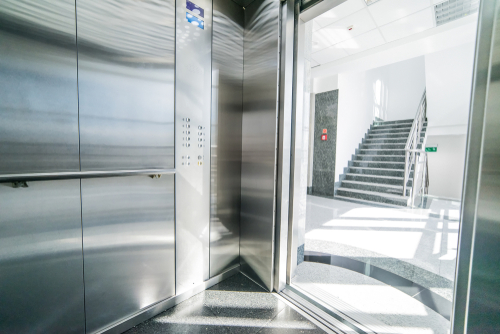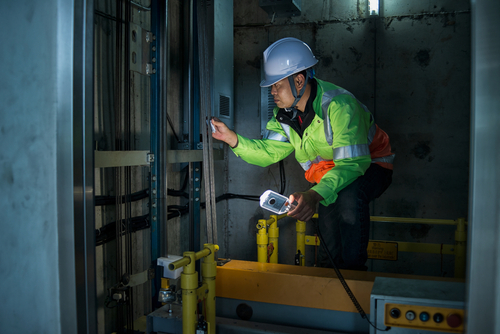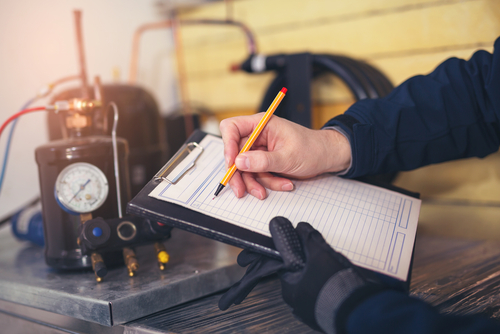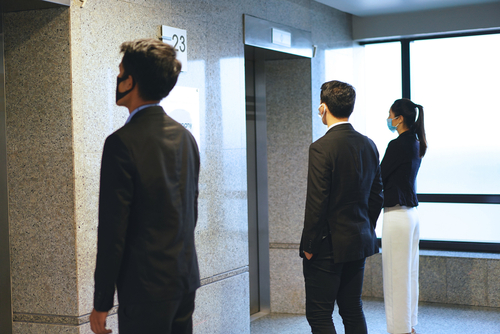
The Process of Installing an Elevator in Singapore
December 28, 2022
Importance Of Lift User Education
March 27, 2023Safe Practices To Follow For Lift Maintenance

Safe Practices To Follow For Lift Maintenance. Monthly professional elevator maintenance is crucial in avoiding costly repairs and potential safety hazards. The cost of a service agreement may appear high initially, but it pales compared to the expenses incurred from elevator repairs and fines for neglecting safety regulations.
Safe Practices To Follow For Lift Maintenance

1. Keep Up With Safety Regulations
Neglecting maintenance and ignoring safety regulations can make commercial elevators hazardous. On the other hand, adhering to safety standards can make elevators a safe mode of transportation. Stay informed of the latest regulations from the local Department of Buildings and maintain a consistent safety inspection schedule to ensure your elevators operate smoothly and securely.
2. Check Emergency & Communication Equipment
Elevator maintenance aims to avoid emergencies, but it’s also important to be ready for them. Elevators have battery backup, emergency lighting, and communication systems for use during power failures. Regular monthly inspections should verify that these crucial safety features are functioning correctly to minimize the risk of elevator violations and fines.
3. Be Proactive With Your Elevator Maintenance
Proactive maintenance helps prevent issues before they arise. Monthly inspections and maintenance are crucial, especially in commercial buildings with heavy elevator use. Hidden hazards may not be noticeable, so regular inspections by a certified mechanic are essential to avoid expensive emergency repairs.
4. Maintain Cleanliness in Elevator Machine Room and Pit
The elevator machine room and pit are essential parts that must be kept clean. Only equipment related to the elevator is allowed in the machine room, despite its convenience as a storage location.
Please don’t store any items in your elevator machine room to avoid penalties and safety risks. Moisture buildup or oil leaks in the elevator pit can cause severe damage to your elevator equipment and result in expensive repairs. You can watch for leaks and use a sump pump safely if water is in the elevator pit.
5. Create an Elevator Service Schedule

Regular elevator inspections and maintenance can enhance safety and lower costs. Neglecting a set schedule may lead to gaps in inspections and costly repairs, but using an elevator service company ensures consistent check-ups and maintenance. This helps keep your elevators in optimal condition.
You don’t need to be a specialist in elevator maintenance to ensure optimal performance in your building. Here’s an overview of best practices for elevator maintenance.
Take the Elevators Often

Advise to regularly check the elevators in the managed buildings, about once a week, to ensure their proper operation. Inquire with tenant coordinators or other building personnel if there have been any elevator-related tenant complaints.
Don’t Ignore Small Warning Signs
Be mindful of potential warning signs, which may indicate a more significant issue. Slight hesitations, door malfunctions, faulty lights, or strange noises could lead to expensive repairs and future inconvenience.
Keep an eye out for other elevator issues, such as unexplained vibrations, misalignment with the floor upon stopping, and sluggish performance. Promptly report any irregularities to the elevator technician.
Schedule Planned Maintenance
Preventive maintenance is a critical factor in ensuring elevator reliability. Professional maintenance technicians can detect potential issues early and address them before they become noticeable to users.
Elevator safety is of utmost importance, and regular maintenance helps to minimize repair costs and avoid serious threats in case of a breakdown. You can choose a trustworthy elevator repair and maintenance provider for the best results.
Ensure Your Training Is up to Date

It is crucial to keep your staff’s training current. Regular training should be provided whenever new equipment is introduced and continually for lifting operation safety measures. This ensures that your team can perform their work safely, competently, and efficiently.
Implement Superior Monitoring and Overload Protection Systems
By incorporating monitoring and overload protection systems into your lifting and handling equipment, you ensure safe and effective operation and prevent accidents from misuse.
Ensure you have the appropriate strategies for your specific work requirements and correctly integrate them into your equipment. Utilizing top-notch safety systems not only protects your staff but also prolongs the lifespan of your equipment.
Safe Practices To Follow For Lift Maintenance – Conclusion

People can be injured by moving parts of lifting equipment, falling, or ejected materials that hit them. Body parts can also be caught between belts, rollers, pulley drives, and chains. Sharp edges and parts can result in tears and cuts, while rough surfaces can cause abrasion or friction.
People can become trapped between moving and stationary parts of machines, walls, or other objects, where shearing forces occur when the two parts move against each other. Hot or cold machine parts, materials, and emissions can cause burns or scalds, and electricity can produce electrocution and burns.
Poor maintenance or lack of training can lead to unreliable and error-prone equipment or accessories, and machine failure or falling loads can occur.
By establishing a routine for elevator maintenance, your tenants will experience improved safety and efficiency, and you’ll be assured that your elevator is functioning at its best.




